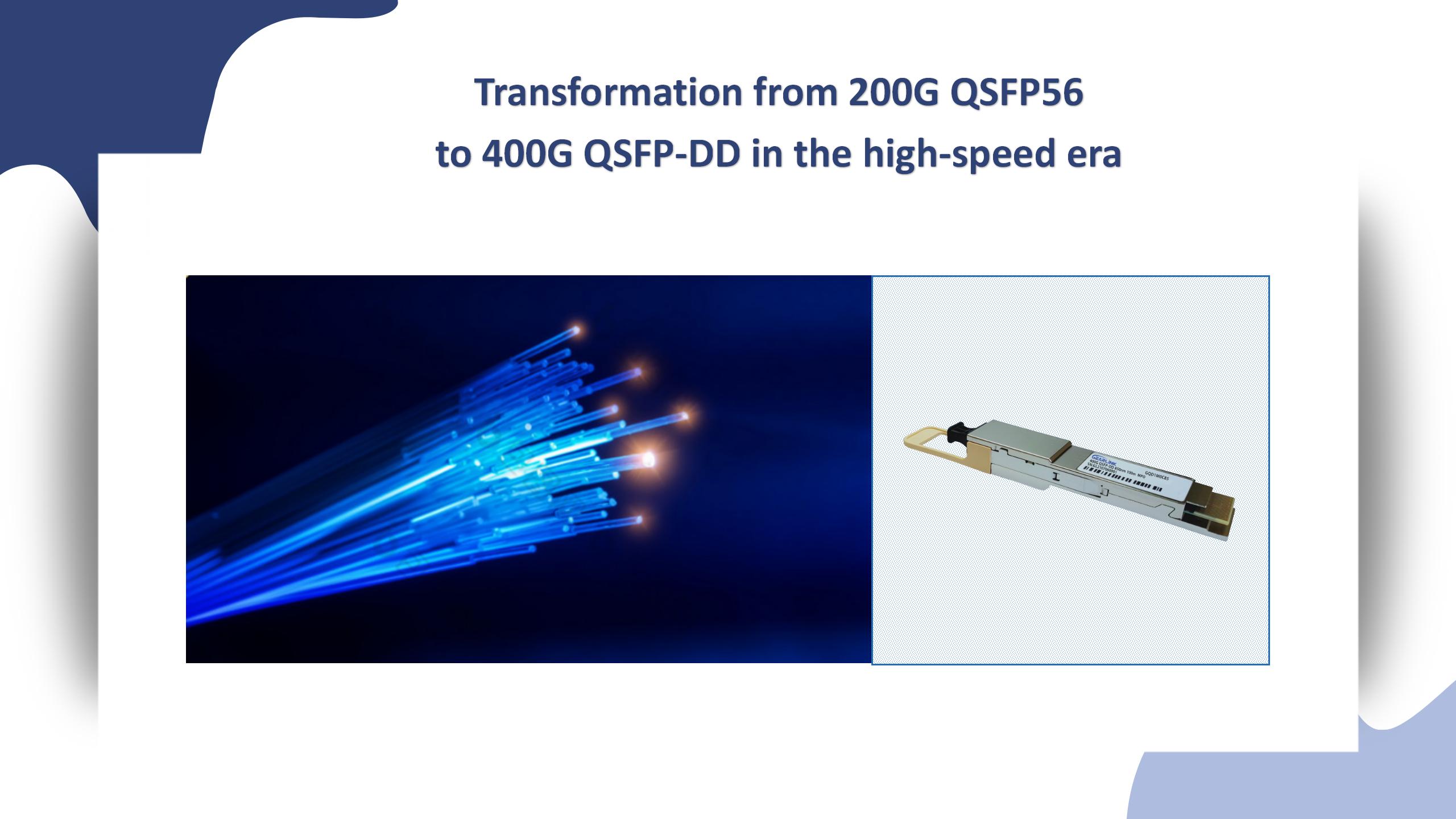With the continuous deepening of the digital wave, the network communication industry has higher and higher requirements for high-speed and stable data transmission. Under this framework, 200G QSFP56 and 400G QSFP-DD, as high-speed transmission optical transceiver modules, have attracted the attention of the industry. This article will introduce the definitions, differences and application scenarios of these two optical transceiver modules in detail in terms of transmission rate, external dimensions, and number of channels, and explain the trend of transition from 200G QSFP56 to 400G QSFP-DD.
Both QSFP56 and QSFP-DD are specifications for high-speed transmission optical transceiver modules, among which QSFP56 is 4x50G (up to 4x56G) PAM4 modulation, while QSFP-DD is 8-channel transmission, and the rate per channel is up to 25Gb/s (NRZ modulation) or 50Gb/ s (PAM4 modulation), aggregation provides solutions up to 200Gb/s or 400Gb/s. The 400G QSFP-DD optical transceiver module can be backward compatible with 40G QSFP+, 100G QSFP28, 200G QSFP56, etc. In QSFP56 and QSFP-DD optical transceiver modules, data reaches the target device through multiplex transmission. They are defined in terms of transmission rate, number of channels, interface type and form factor standards. These high-end optical transceiver modules have been widely used in many fields such as data center applications.
Transmission rate
200G QSFP56 and 400G QSFP-DD support maximum transmission rates of 200G and 400G respectively. The 400G QSFP-DD optical transceiver module obviously has higher transmission speed and capacity than the 200G QSFP56 optical transceiver module, and can have a wider application space in the network communication industry.
Package and Dimensions
The package for 200G QSFP56 is QSFP56, which measures 54mm x 18mm x 8.5mm, while the package for 400G QSFP-DD is QSFP-DD, which measures 76mm x 36mm x 8.5mm. In terms of dimensions, the 400G QSFP-DD optical transceiver module is wider than the 200G QSFP56 optical transceiver module.
Number of channels
The number of channels of 200G QSFP56 is 4, while the number of channels of 400G QSFP-DD is 8. The number of channels of 400G QSFP-DD enables it to have more data channels and the highest transmission rate to meet the needs of modern computer data and audio and video transmission.
Differences between 200G QSFP56 and 400G QSFP-DD usage scenarios
200G QSFP56 optical transceiver modules and 400G QSFP-DD optical transceiver modules have different applications in different scenarios according to their data transmission and capacity. 200G QSFP56 optical transceiver modules are usually used in data centers, computer networks, cloud computing and other occasions that require high-speed and long-distance data transmission, such as high-speed network switches, routers and other equipment. The 400G QSFP-DD optical transceiver module is usually used in higher-level data centers, supercomputers and other occasions that require higher-speed data transmission, such as high-speed servers, switches and other equipment. Moreover, the application of 400G QSFP-DD in the fields of video conferencing and medical information technology also has more obvious advantages.
At present, the application range of 200G QSFP56 and 400G QSFP-DD optical transceiver modules is increasing, and the application field of 400G QSFP-DD optical transceiver modules will be further expanded. With the rapid development of the digital wave, manufacturers have been committed to improving the compatibility, stability and reliability of 400G QSFP-DD. It is expected that it will become a mainstream product in data center applications and other fields in the next few years. Therefore, with the development of high-speed network technology, the transition from 200G QSFP56 optical transceiver modules to 400G QSFP-DD is inevitable.


